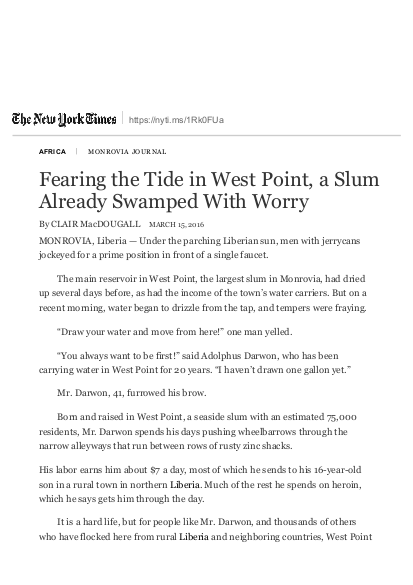
West Point rose from the ocean in the 1940s, when Monrovia’s first shipping port was dredged and created. A group of fishermen moved to the sandy patch of land next to the heart of Monrovia, and the capital’s largest slum was born. As the years passed and migration and war pushed more Liberians into Monrovia, West Point expanded.
Now it is packed with local fishermen and migrants from upcountry; gangsters who steal car batteries, rob people and deal drugs; and market women selling piles of coal, chicken feet and potato greens.
The slum is home to an array of ethnicities, religions and languages. Along West Point’s single paved road, lined with food, tea stalls, tailors and video shops, men in Islamic skullcaps and women in chadors live side-by-side with tattooed men in tank tops and women in micro shorts.
In recent years, residents have faced bigger battles than negative perceptions. The tide that is claiming vast swaths of their coast is becoming hungrier, and the community is vanishing, despite efforts to reclaim its man-made boundaries with garbage, and buffers made of sandbags and corrugated zinc.
The question now is whether to improve infrastructure and facilities in West Point — or to move the residents elsewhere.
Links
Resource collections
- UN Habitat - Urban Response Collection
- Urban Response - Urban Crisis Preparedness and Risk Reduction
- Urban Response Collection - Community Engagement and Social Cohesion
- Urban Response Collection - Economic Recovery
- Urban Response Collection - Environment and Climate Change
- Urban Response Collection - Housing, Land and Property
- Urban Response Collection - Urban Crisis Response, Recovery and Reconstruction
- Urban Response Collection - Urban Resilience